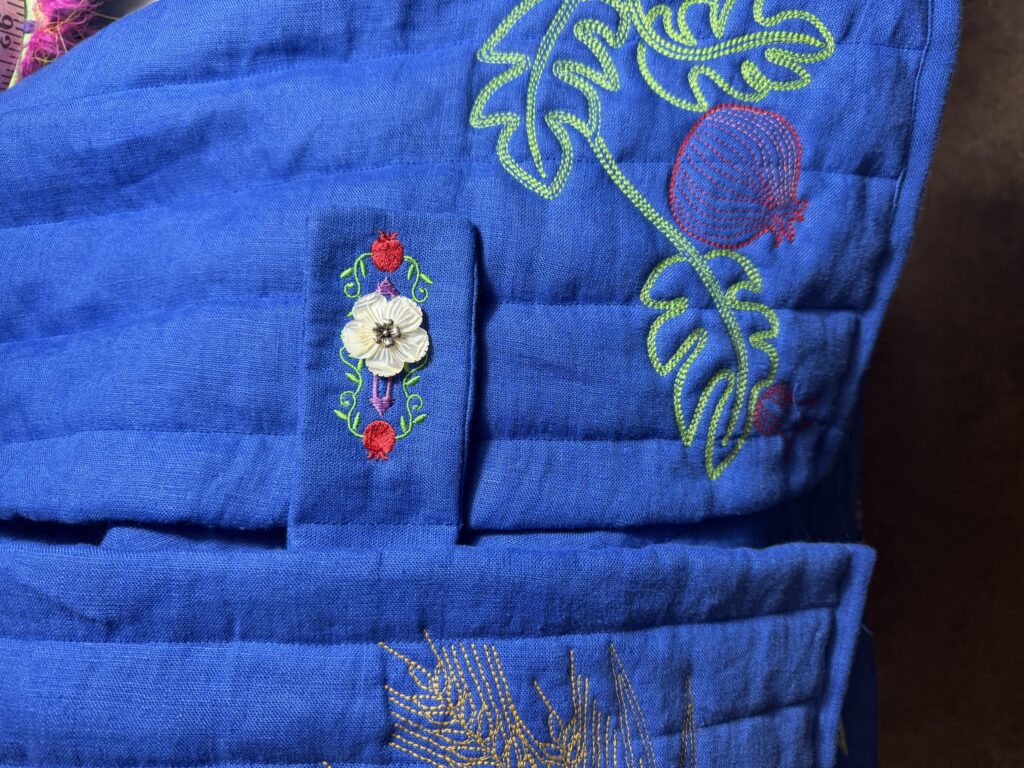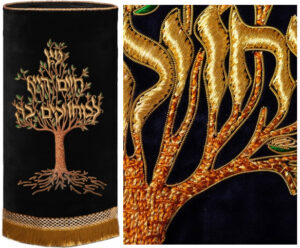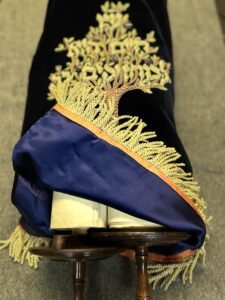We support our Publishers and Content Creators. You can view this story on their website by CLICKING HERE.
Guest post by Yaacov Apelbaum at The Illustrated Primer
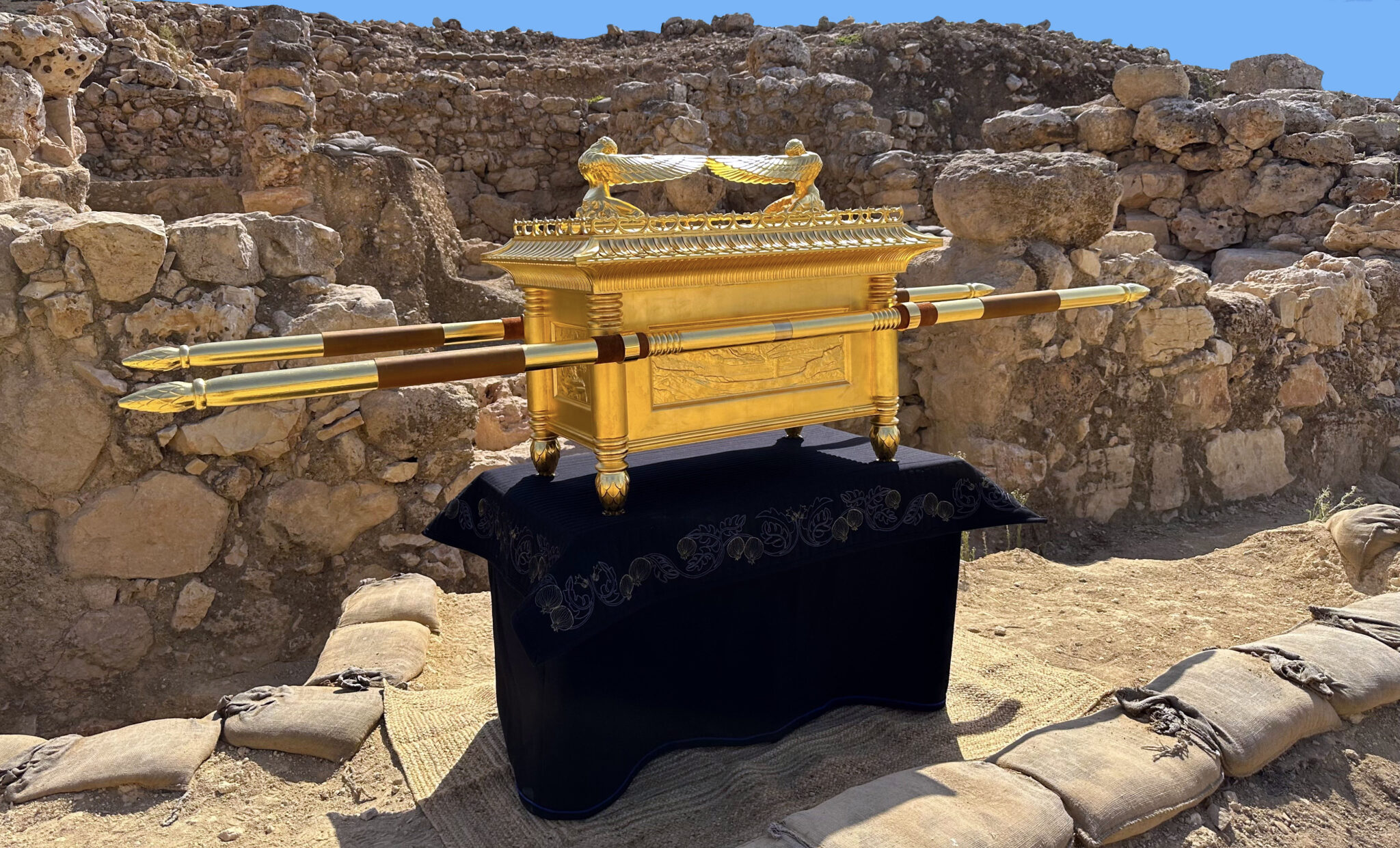
Over three years ago, a group of faithful volunteers embarked on a mission as ancient as time itself: to recreate the Ark of the Covenant, a sacred vessel forged in fire and spirit, whose echoes have reverberated across millennia. This journey began with the humble donation of a golden artifact from the First Temple, inscribed with the timeless words, “Consecrated to God.” It was a seed of faith planted, a calling that demanded both the mastery of their hands and the devotion of their souls. Sourcing the materials proved to be a monumental challenge. The Acacia wood (עצי שיטים), mentioned in the Torah, had to be found in sufficient quantity and durable condition, while over seven pounds of pure gold—some from Egyptian idols (Exodus 11:2)—needed to be refined, cast, and hammered. Every grain of gold was prepared with intent and reverence, every detail crafted with an eye toward the divine. The group sought to recreate the Ark not as a mere object but as a symbol of the covenant between God and His people—a bridge between heaven and earth.
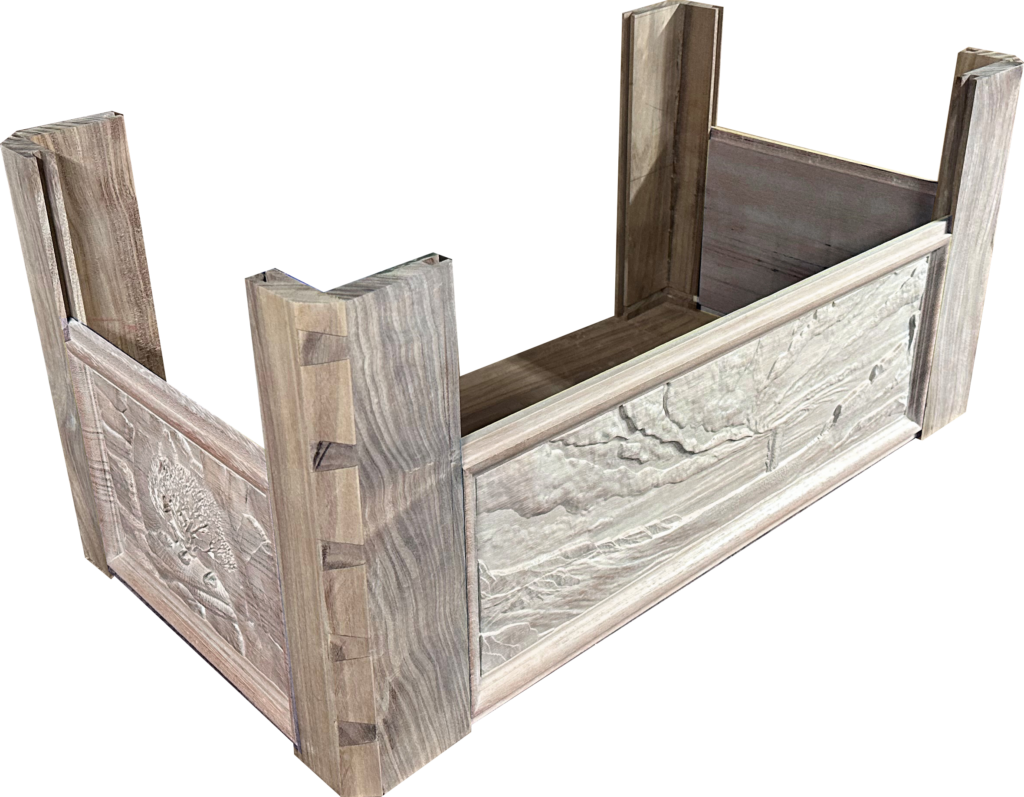
Joinery used in the construction
The textiles, too, presented an enormous challenge. The inner liner, table covers, and the covering for the Ark had to be woven and embroidered using ancient techniques. Linen and wool sandwiches were spun by hand and dyed using biblical-style dyes like Techelet (blue), Argaman (purple), and Tola’at Shani (crimson).
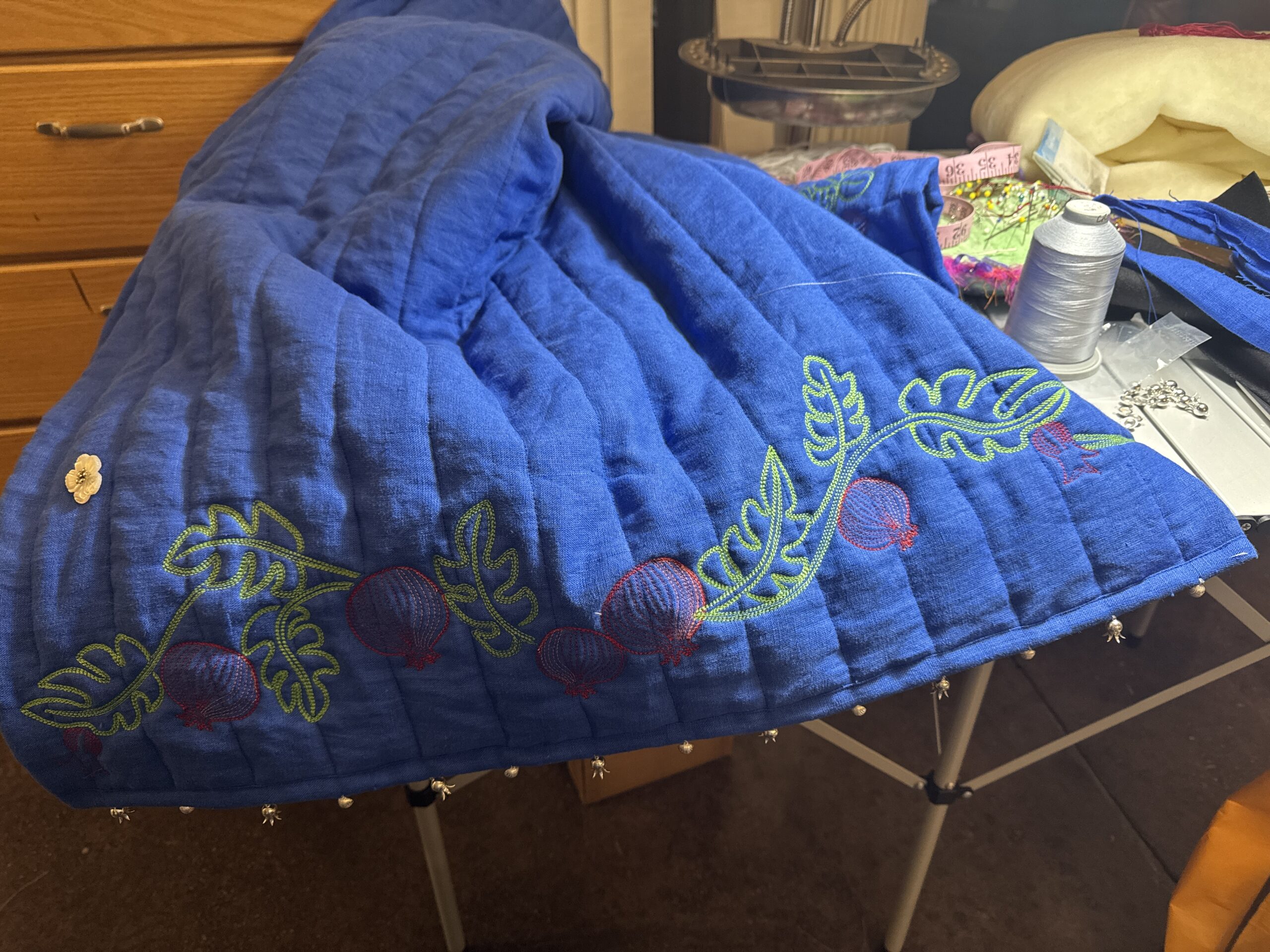
Silver pomegranates and shells at the bottom of the Ark cover
The inner Shatnez liner using the Lilies of the Field (שׁוֹשַׁנַּת הַמֶּלֶךְ/כלנית) motif with the priestly blessing on the walls
The embroidery was carried out by skilled artisans who recreated designs of the seven biblical species of Wheat, Barley, Grapes, Figs, Pomegranates, Olives (oil), and Dates (honey) to adorn the Ark’s covering, including the liner inside the Ark that would house a Torah Scroll. The Torah was a Holocaust survivor from Thessaloniki, Greece. These elements, rich in symbolic patterns, mirrored those described in the bible and in archaeology. Each stitch blended faith and artistry in a process that took months to complete. The artisans approached the embroidery not just as a craft but as an act of worship, pouring their devotion into every thread. The result was an intricately detailed worthy of the Ark’s sacred role, woven and embroidered with precision, reverence, love, and care.
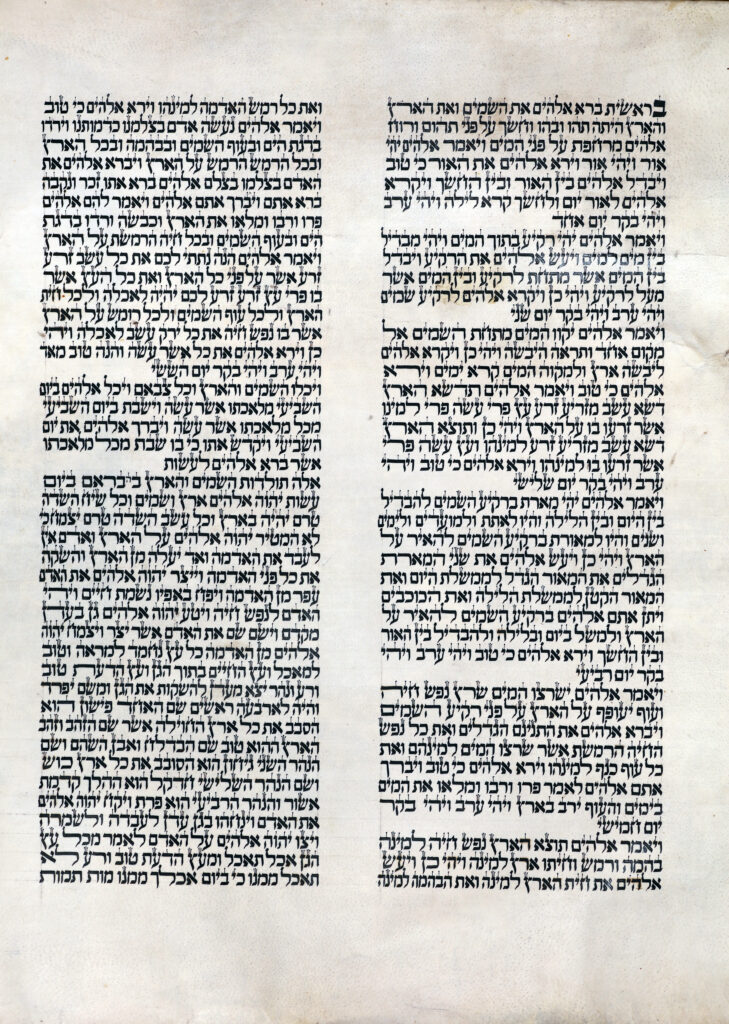
The first page of the book of Genesis
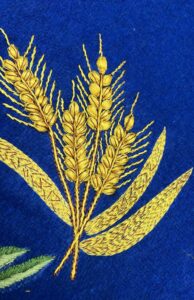

Sample hand embroidery of Wheat
All carpentry aspects were crucial to the project. The group had to figure out how to use ancient woodworking and joinery techniques like mortise and tenon to ensure the Ark was built to the exact specifications given in the Torah. They consulted historians, Egyptian artifacts, and craftsmen, attempting to replicate the techniques used by Bezalel, the biblical artisan who was divinely inspired to manage the building of the Ark, Tabernacle, and all the vessels.
The embroidered Torah cover with the inscription “She is a tree of life to those who hold her...” Proverbs 3:18
The design, fabrication, and casting of the golden elements, such as the two Cherubim (כרובים), crown (זֵר), carrier rings () required an intricate process, especially since these figures had to be hammered from solid gold. These male and female Cherubim (based on Genesis 1:27) sit atop the Ark’s cover, known as the Kaporet (כפורת), with their wings outstretched toward each other, forming a divine throne for the presence of God. The craftsmanship involved was guided by more than just the descriptions in the Torah; the group turned to various Hebrew sources like the Mishnah , Talmud , and Aggadah to fill in the missing details and ensure the accuracy of their work.
The Mishnah provided practical guidance on the measurements and proportions, ensuring that the dimensions adhered to the standards passed down through generations. The Talmud offered deeper commentary on the symbolism of each element, discussing not only the function of the Cherubim but also the spiritual significance behind their construction. According to the sages, the Cherubim represented the relationship between God and His people—one of closeness, yet mystery. Their faces hidden from sight, looking down towards the Kaporet and shielding the Ark from above, symbolized the connection between the earthly and the divine.
One particularly fascinating detail came from the interpretation of Psalm 114, which celebrates Israel’s exodus from Egypt. The craftsmen, guided by the traditions preserved in various Jewish sources, decided that each Cherub would have 114 feathers, corresponding to the verses of this Psalm, as a subtle homage to the freedom and faith that the Ark itself represents. This attention to symbolic detail, derived from layers of scriptural and rabbinic teachings, infused the work with profound meaning, beyond the physical beauty of the Ark.
In addition to the precise materials, acacia wood, gems, and the linen, wool, and cotton were chosen based based on halakhic sources, ensuring that every aspect of the Ark adhered to biblical tradition. Even the method of casting the gold and hammering the Cherubim was done with strict adherence to the descriptions found in these ancient texts, ensuring that the Ark was not just a replica, but a sacred vessel imbued with the holiness of its predecessors.
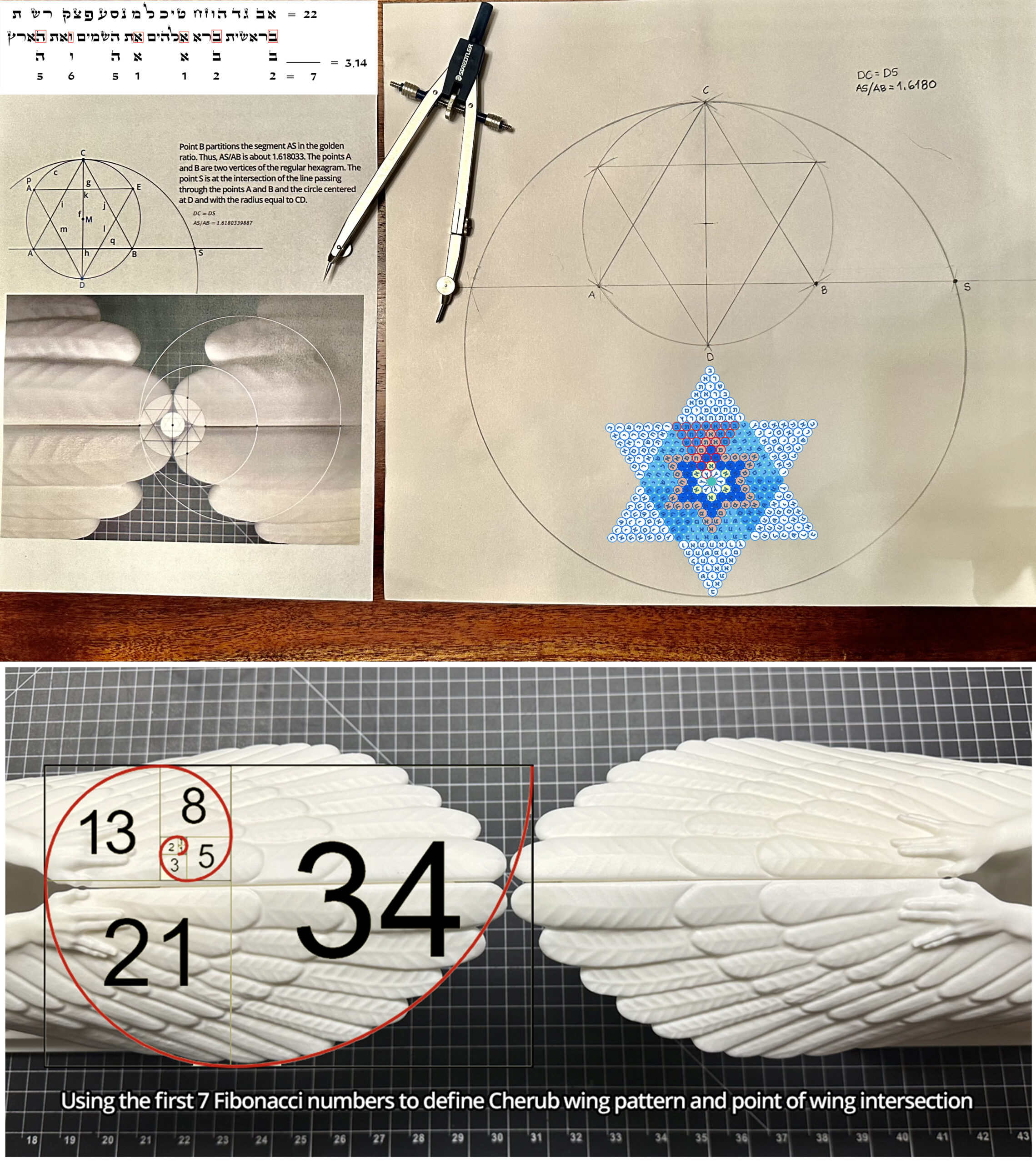
Sample geometry and math used in the Ark design
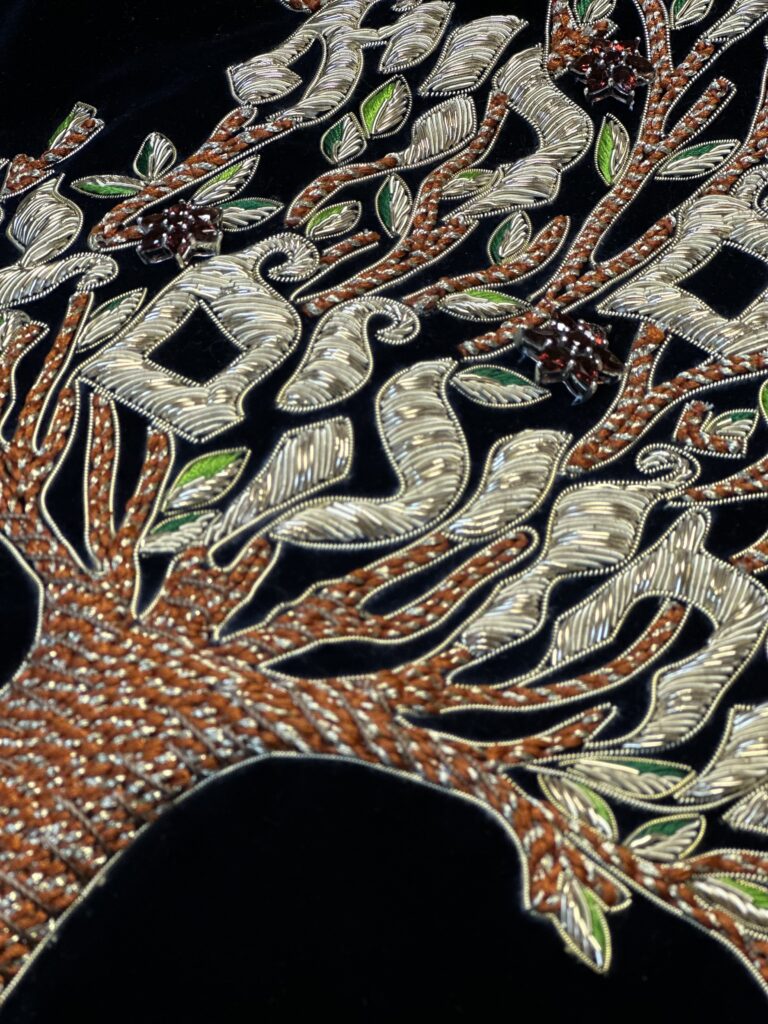
Gems, silver, and gold wire used in the decoration of the Torah cover
The refining of gold, the precise details required in the casting process, and the structural engineering for the Ark’s construction demanded meticulous planning. Adhering to biblical requirements, the Ark had to be designed to be carried by four Levites over long distances. This required careful design and placement of the carrier poles, which were essential to its mobility. The poles needed to be engineered to balance the load evenly, ensuring stability during transport while minimizing torsion, shear, and vibration at the carrier rings.
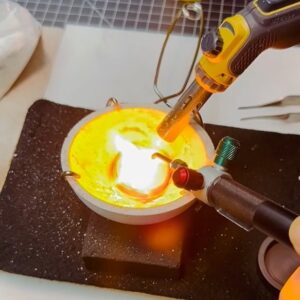
Melting down gold ingot in perpetration for casting
To achieve this, modern design methods such as finite element analysis (FEA) were employed to simulate and analyze the stresses on the Ark and its supporting components. This ensured that the poles could support the weight of ~ 130 LBS under real-world conditions without risk of damage or failure. The FEA allowed for a precise understanding of how the structure would behave, optimizing the construction to meet both aesthetics and performance standards.
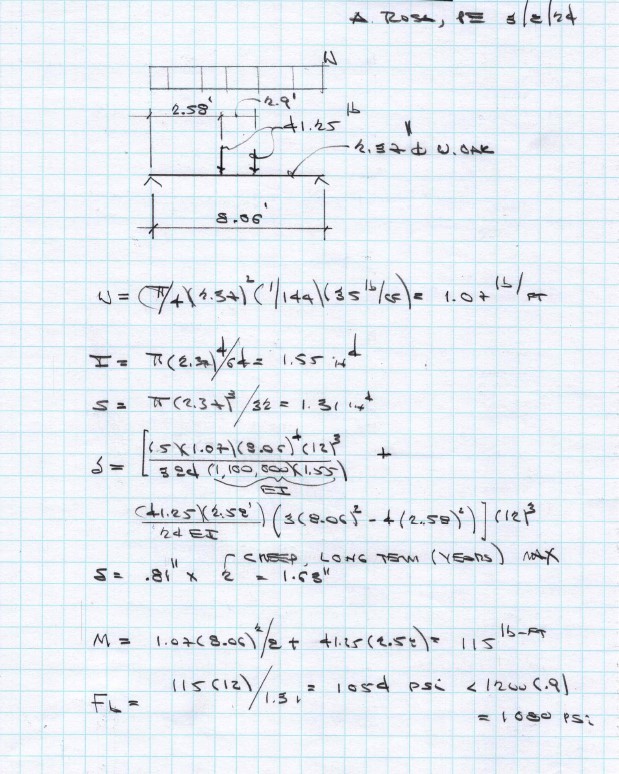
Sample stress and load calculation for the carrier poles
The project, by its very nature, embodied community collaboration. Every measurement, material, technique, and design choice was made faithfully to the original intent, blending ancient fabrication and decoration methods with modern manufacturing expertise to create something not only practical but also beautiful and deeply spiritual with the objective of affirming the covenant between G‑d, His people, and the land of Israel.
Once the Ark was completed, the next phase of the journey began—bringing it to Israel, a task that proved as challenging as its construction. The skies over Israel had been mostly shut down, with commercial flights suspended due to the ongoing war and constant rocket attacks. There was no way to reserve cargo air transport with traditional shippers; very few flights entered or left the country. Despite these obstacles, the group remained steadfast in their belief that the mission would succeed.
Behind the scenes, a remarkable network of people came together to make the seemingly impossible happen. What began as a small, private effort quickly grew into a larger operation involving dozens of individuals. Friends, colleagues, and even strangers from around the world heard about the mission and offered their skills, resources, and connections. Quietly, an international operation took shape involving logistics, security, and military contacts.
The breakthrough came when a rare opportunity arose to transport the Ark as part of a DoD cargo shipment. These flights, typically reserved for essential military materials, rarely made exceptions for civilian projects. But through what some may call divine intervention, the group secured space for the Ark on one of these flights.
The shipment was quickly coordinated. The Ark was packed in a specially designed waterproof aluminum container and handled with the utmost care, as one would handle a baby. The crew, who had no direct connection to the mission, treated the Ark with reverence, sensing its significance. The fact that the Ark was being moved as part of a military support operation, flying over the war zone below, felt almost poetic—a reminder of its historical role as both a vessel of faith and a cataclysmic weapon carried ahead of the Army.
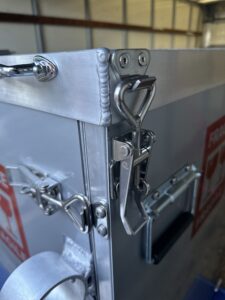

The Ark packaged in the container ready for shipment
The network of individuals involved in the operation extended far beyond the original group. Contacts at airports, logistics, transportation, military, law enforcement, and customs officials all played crucial roles in ensuring the Ark’s travel. What could have easily been a bureaucratic nightmare turned into an efficient act of international cooperation, as if the mission itself had taken on a life of its own.
Despite the daily rocket attacks, the group landed quietly in Israel. They cleared the 300-pound container through customs in a record 15 minutes, loaded it onto a truck, and set off for their first destination: the ancient city of Shiloh. This sacred site, where the original Ark was kept for 369 years during the period of the Tabernacle, became the Ark’s first resting place in its journey through the Holy Land. Upon arrival, the Levites accompanying the Ark carefully placed it in the location where the original Ark had stood over 3,000 years ago. The moment was profound as they gathered around the Ark, singing the ancient blessing from Numbers 10:35-36:
When the Ark was to set out, Moses would say: Advance, O G-D, May Your enemies be scattered, And may Your foes flee before You!
Their journey did not end at Shiloh. They visited Jericho, where the Ark circled the city walls for seven days before they collapsed. Then came the Temple Mount, where the First Temple once stood, and King David’s palace in the City of David, where King David kept the Ark before it found its place in King Solomon’s temple. Finally, they finished in Beit Shemesh, retracing the path of the Ark taken when it was returned by the Philistines—a story laden with mystery and divine intervention. At each stop, there was a reverence, a quiet awe, as though they were following in the footsteps of their ancestors from millennia past.
But it was at Shiloh that something extraordinary occurred. Within a minute of the Levites reciting the ancient blessing, Yahya Sinwar, the architect of the October 7th massacre, was dead. The timing was uncanny, almost impossible to comprehend. They had just spoken the words “May Your enemies be scattered,” and now one the most feared and wanted figures in recent history was gone.
The circumstances surrounding Sinwar’s death were shrouded in mystery. It wasn’t the result of a calculated intelligence operation or a successful manhunt; instead, it seemed to happen by an inexplicable twist of fate. For over a year, Sinwar had slipped through the grasp of Israeli intelligence, always one step ahead, and was likely en route to Egypt, beyond the reach of those seeking justice. Yet, in that moment, without warning, he was struck down—The timing was beyond coincidence; it was as if the heavens themselves had responded to the prayer. The hand of judgment had moved swiftly and silently, scattering the enemies of God as the Ark had once done in days long past.
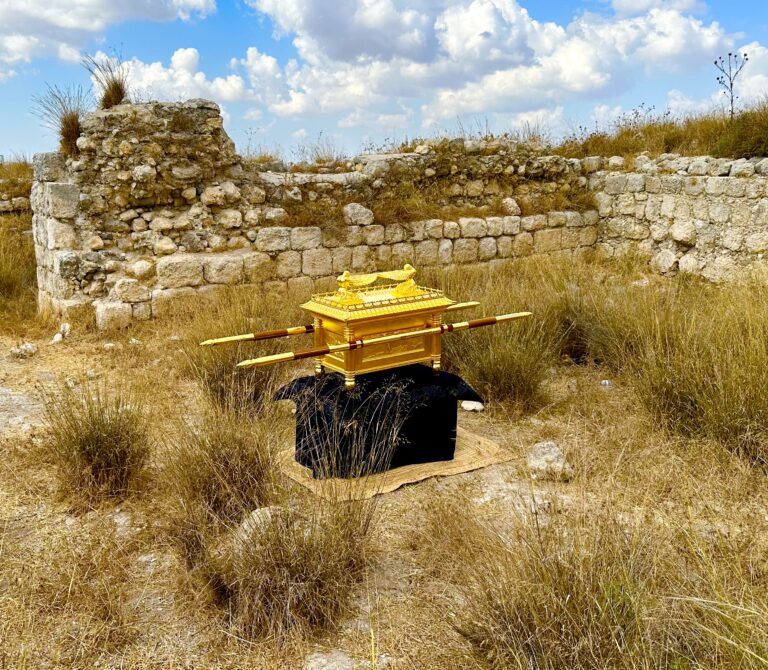
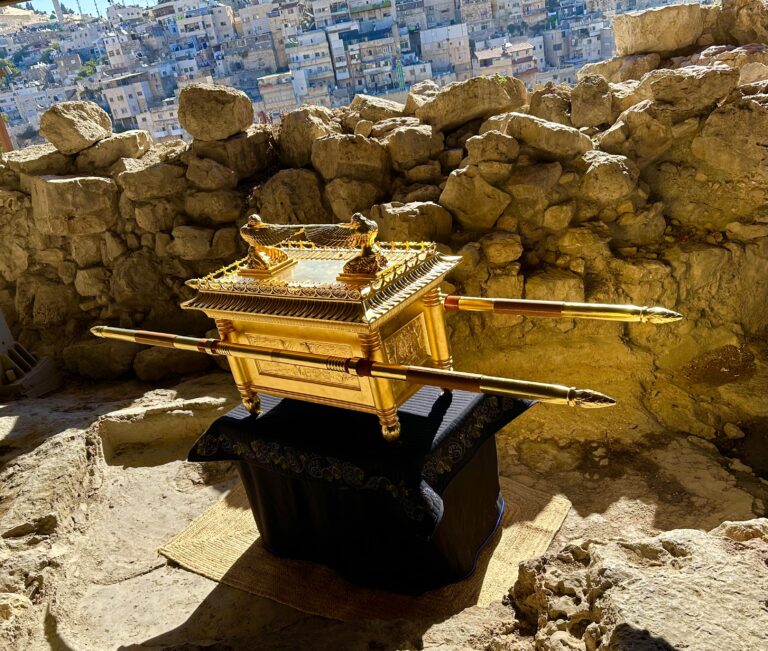

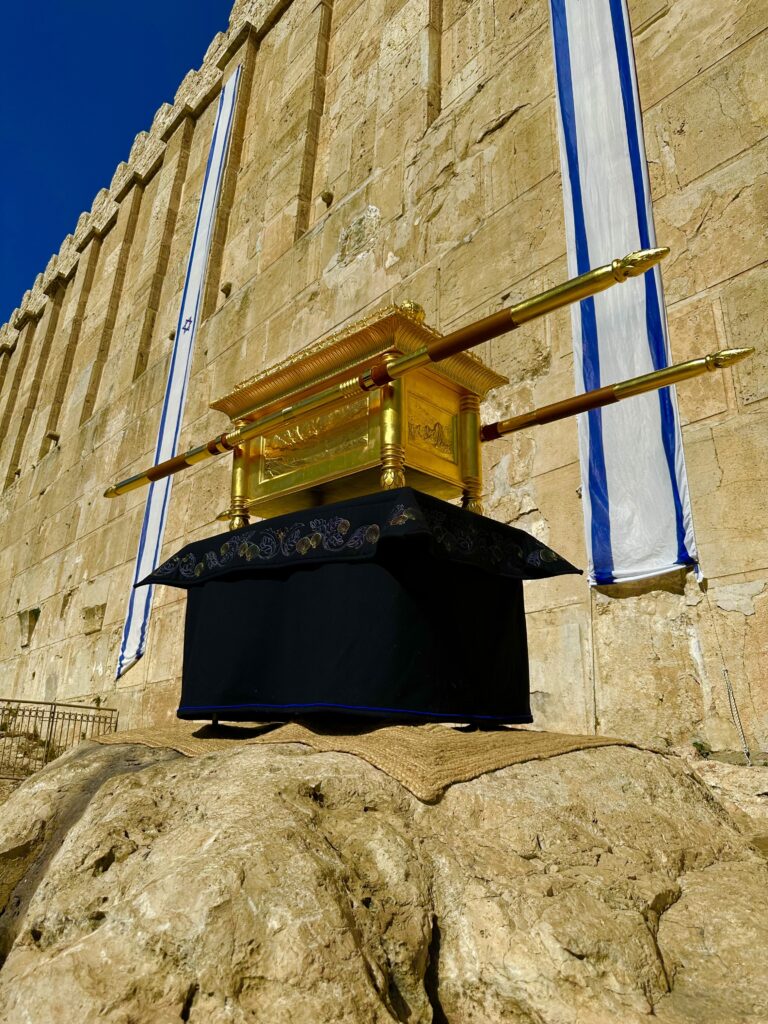

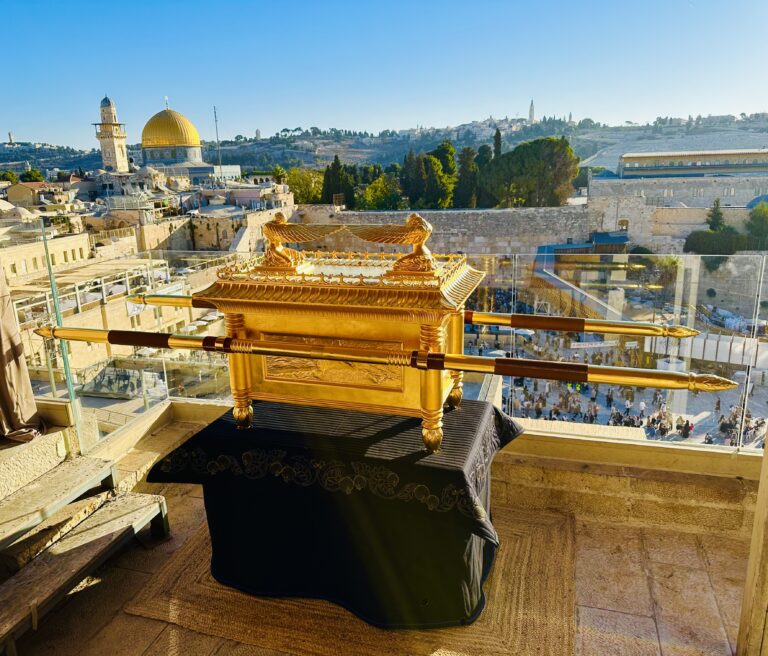

 Conservative
Conservative  Search
Search Trending
Trending Current News
Current News 